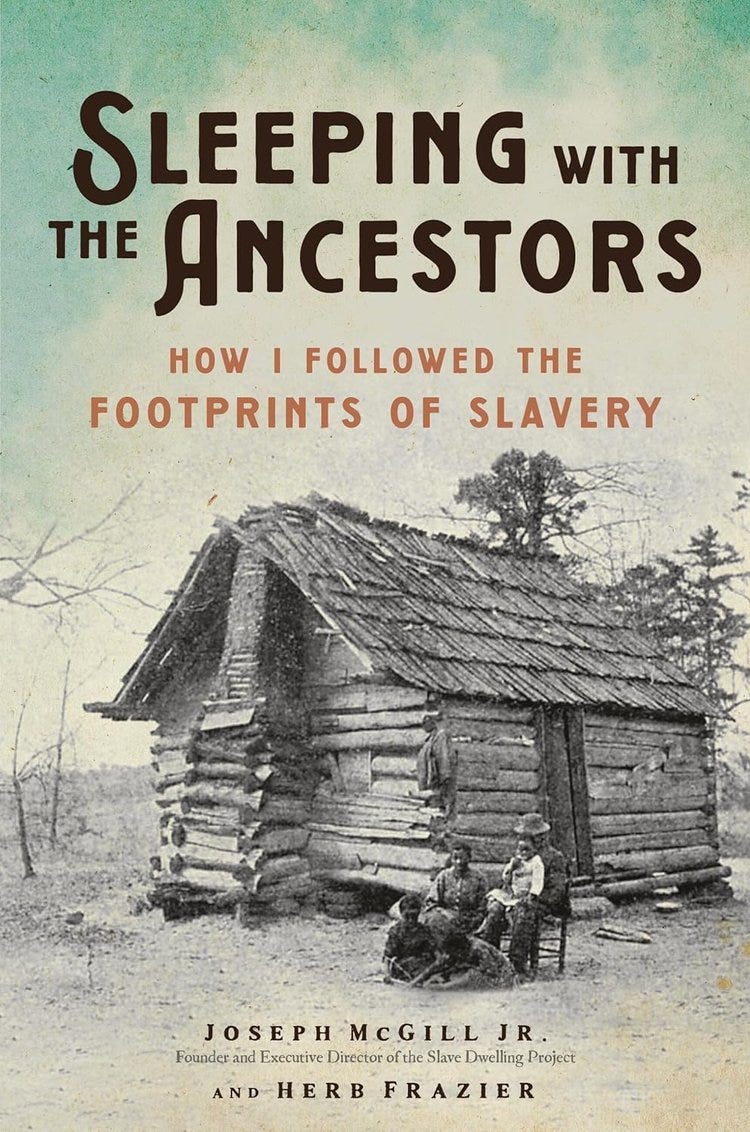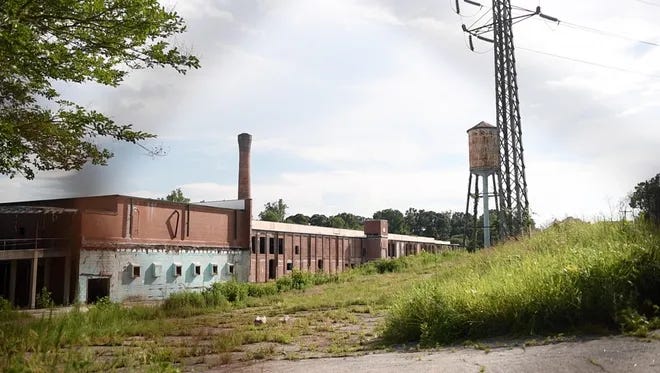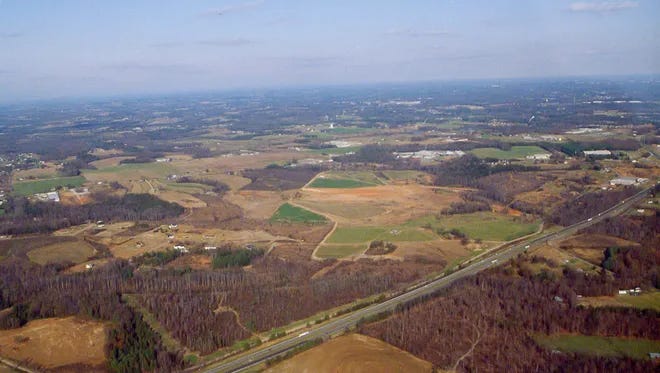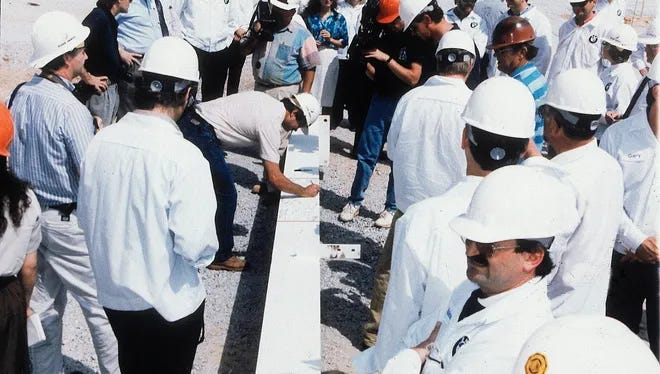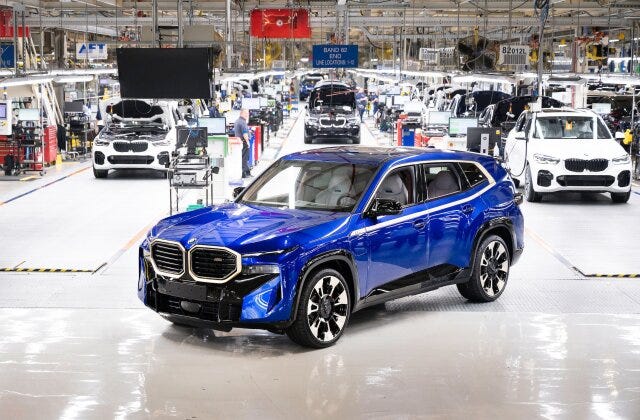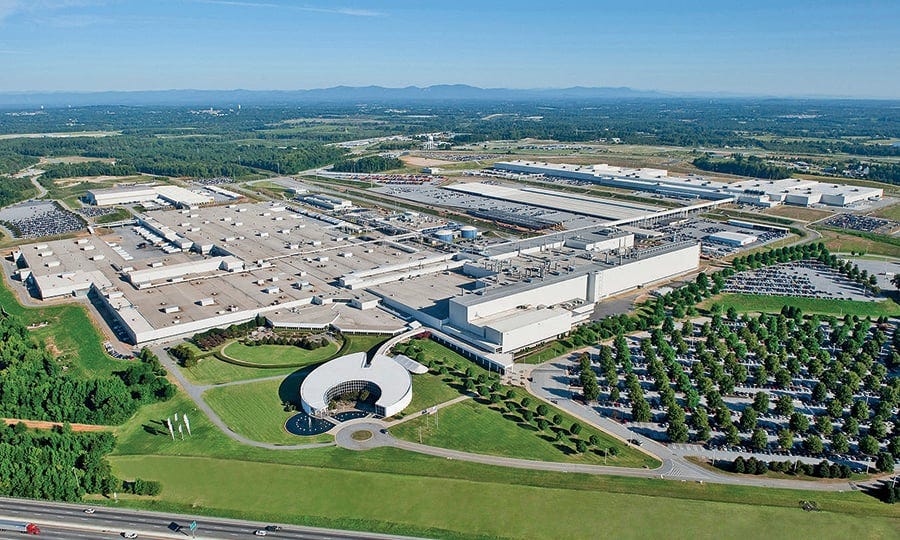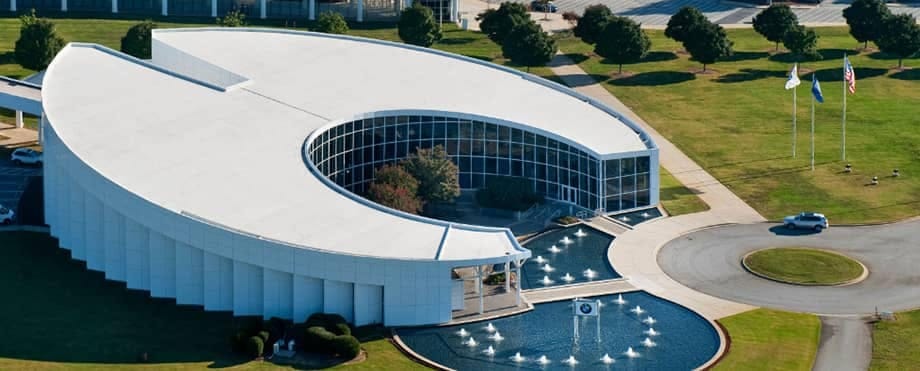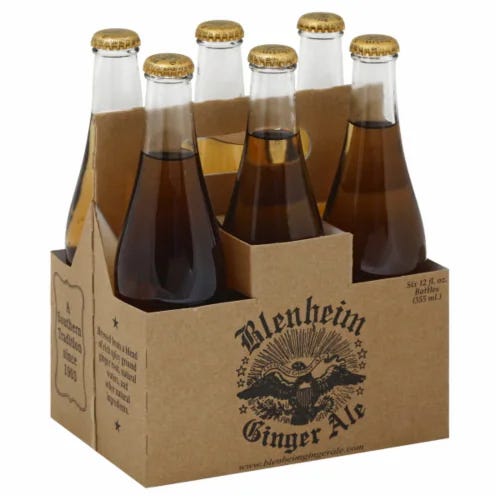#37: How SC landed BMW, a "4-sneeze" ginger ale, and a lecture from the Slave Dwelling Project
For South Carolina history lovers far and wide! Enjoy weekly SC history and upcoming SC historical events
Dear reader,
Welcome to Newsletter #37 of The South Carolina History Newsletter! I’m so happy you’re here.
I hope you enjoy today’s newsletter, and as always, please feel free to reply to this email with your ideas and suggestions on South Carolina history you’d like to learn more about. I’m only a click away.
Additionally, please join us & keep the conversation going by becoming a member of our SC History Newsletter Facebook Community here! I can’t wait to meet you.
And now, let’s learn some South Carolina history!
Yours truly,
Kate
(Writing from Greenville, SC)
➳ Featured SC History Event
Please enjoy our featured SC History Event below, and click here to visit my SC History Events Calendar that organizes all the upcoming SC history events I have discovered. Please let me know if you’d like to add an event to the calendar! Reply to this email or send me a note at schistorynewsletter@gmail.com.
Monday, March 25th from 6:30 - 7:30 pm | “The Slave Dwelling Project: Why Should We Preserve These Spaces?” | Daniel Chapel, Furman University | Greenville, SC | FREE
“Join UPT and the Furman University Department of History on Monday, March 25, at 6:30pm for a discussion with Joseph McGill, Jr. Mr. McGill is the founder of the Slave Dwelling Project and author of the book, Sleeping with the Ancestors: How I Followed the Footsteps of Slavery. Mr. McGill will discuss his experiences at these historic properties and why preserving these spaces is so important. He will discuss staying at Oakland Plantation, and attendees will hear from UPT about the Oakland Plantation project and the plans to restore and preserve the slave cabin on the premises. This event is open to the public, so we hope to see you at Furman on March 25!”
➳ SC History Fun Facts
I.
Did you know that 32 years ago, BMW’s choice to build their North American plant in Spartanburg County transformed the South Carolina economy at a time when the textile industry was dying?
This June, it will be 32 years since then BMW Chairman Dr. Eberhard von Kuenheim announced the company would build its first full production factory outside of Germany here in South Carolina, in Spartanburg County. Originally, BMW had targeted 4 sites in the US: Phoenix, Arizona; Tulsa, Oklahoma; Omaha, Nebraska; and Anderson, South Carolina. Ultimately winning the bid for BMW’s business was an honor that South Carolina fought hard for, and the state needed a new economic engine at a time when its core industry was dying.
By 1992, the textile industry of South Carolina, which had dominated the state’s economy for nearly 100 years, had “all but collapsed” due to foreign competition on pricing. Mills had been closing down for decades, and this left a void of 25,000 jobs in the state. Watching the mill industry decline was real but at the same time unfathomable, because it had been such a staple of the SC economy for so long. Former U.S. Secretary of Commerce Frederick B. Dent said, “This was an industry that had been protected, made the materials for our clothes, our sheetings, cars, all the liners that go in cars, nobody thought this industry could go away.”
When BMW set their sights on South Carolina, the state and its leaders pulled out all the stops to court the German automaker. The state recruited prominent German business people operating in South Carolina to travel to Germany and help make presentations to BMW executives, touting the state’s workforce and strong technical school system that would provide a runway for skilled workers.
BMW had several requirements in their search, and one of them was “1,200 acres and a four-lane highway.” Nebraska was telling BMW the state would put the plant site near an airfield and close to a rail system to help with exports. And then, BMW threw South Carolina for a loop. At the end of 1991, BMW executives flew into what is now Greenville-Spartanburg International Airport and decided if the plant were to be in South Carolina, it needed to be “near the airport and visible from the road.” But there was one issue: there weren't 1,200 available acres of open land in Spartanburg, most of which was covered by “farmland and homes” at the time. At a moment in negotiations when it looked like Nebraska would soon seal the deal, South Carolina needed a solution fast.
The state approached textile magnate Roger Milliken, the longtime chairman of the airport commission, who “initially wouldn't budge on selling any land at the airport.” But back-and-forth negotiations resulted in an agreement that leaders would find the 1,200 acres BMW needed. The state also recruited development companies and realtors to help convince landowners to part with their properties and effectively “package the land” needed for BMW. Tucker Eskew, a spokesman for then South Carolina Governor Campbell said in a 1992 The New York Times article titled Making Millionaires of Southern Farmers: “Packaging that land was a Herculean task.” The task was herculean, but the state managed to get it done.
Additionally, the Spartanburg County Council put together a weighty incentive package for BMW — money combined “between Spartanburg County, the state, the S.C. Ports Authority, Greenville Spartanburg Airport (GSP) and others.” GSP pledged to spend “$40 million to extend a runway to accommodate a fully-loaded Boeing 747 aircraft BMW needed.” The state offered $25 million for land, $5 million came from the Ports Authority and $10 million was offered to improve roads and sewers, according to archives. The city of Spartanburg paid $200,000 for temporary office space for two years, roughly 50,000 square feet. Spartanburg County also offered to buy a $1.8 million building for temporary offices on the plant site and local businesses raised more than $2.7 million for training.
BMW’s historic announcement was done early in the morning at Greenville-Spartanburg Airport. BMW chairman Dr. Eberhard von Kuenheim could not be there in person, so they did something rare for 1992: a video conference. Dr. von Kuenheim made the announcement to a group of about 200 people at GSP airport. In the company’s initial announcement, BMW pledged to “invest $600 million in South Carolina, create up to 2,000 jobs and attract at least nine suppliers to the state in less than 10 years.” It has since far exceeded those goals.
Along with the land needed and the proximity to the airport, South Carolina was ultimately chosen as the location for the BMW plant as well for “the deep water port of Charleston, its advanced technical college system and the state’s strong work ethic.”
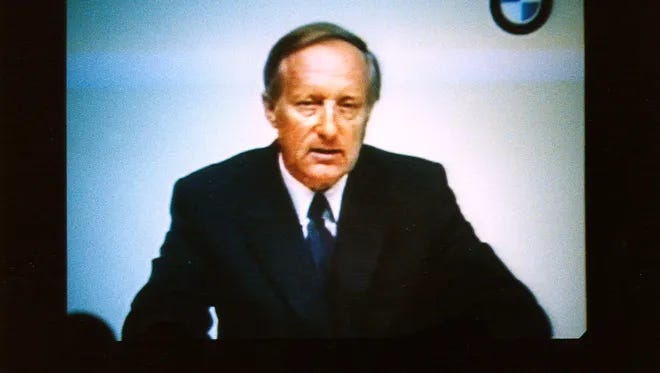
While the the news was generally widely celebrated, there were naysayers who were anxious about the price tags of the state and local incentives offered to BMW. They wondered: would South Carolina ever make our money back on this investment? The answer would be a resounding yes.
Only 2 years after the initial announcement — in September 1994 — the first BMW built in the United States rolled off the assembly line in Spartanburg County. 32 years later, BMW Plant Spartanburg’s “annual economic impact for South Carolina is $26.7 billion, the plant supports nearly 43,000 jobs across the state, and accounts for 4.8% of All Manufacturing Jobs in SC.”
The current facility represents an investment of $10.6 billion that includes “two massive body shops, two paint shops, two assembly halls and an elaborate logistics operation.” Every day, the Spartanburg team produces 5 top-selling BMW X models and 4 Motorsport X models sold in more than 125 countries around the world.
In 2017, celebrating 25 years in South Carolina, then CEO of BMW Manufacturing Knudt Flor said, “This plant has been successful because of our people – their performance, passion and pride…Over the past 25 years, we have had continuous investment, excellent facilities and the best equipment.”
The economic impact of BMW Plant Spartanburg has been remarkable for South Carolina. A 2018 study by the Darla Moore School of Business at the University of South Carolina estimated the “annual economic impact of BMW Manufacturing on the U.S. economy, measured in terms of overall output, was $38.5 billion.” The study also said that BMW Manufacturing operations in South Carolina support nearly 104,000 jobs across the United States.
At the 25 year anniversary event, then Secretary of Commerce Bobby Hitt said:
“Over the course of history, very few events take place that have the power and significance to transform an entire state…An occurrence of that magnitude is rare and happened when BMW located its first North American manufacturing facility in Spartanburg County. Now 25 years and more than 4.75 million vehicles later, South Carolina is a global leader in the automotive industry. Today, we celebrate BMW’s anniversary in South Carolina and look forward to continued growth in the years to come.”
Indeed, the presence of BMW in South Carolina was a "fundamental game changer" that helped to diversify South Carolina's workforce and economy from “agriculture and textiles to automotive and aviation, big farmer and tourism.” All the right factors came together for this transformational moment in South Carolina history. And at the core of the BMW success story is the South Carolina workforce — the men and women who great pride in their work manufacturing these beautiful cars in our beautiful state each day.
II.
Did you know that Blenheim Ginger Ale has its origins in the story of an escaping Patriot in the Revolution?
Blenheim Ginger Ale has its origins in the Marlboro County village of Blenheim. As the story goes, in 1781, Patriot James Spears was attempting to run from the British during the Revolutionary War, when his shoe became stuck in the mud of the natural spring; he left it and kept running. Upon his return, he recovered his shoe and noticed that water sprang from the hole that his shoe left. He tasted the water and noticed its “strong mineral content.” Word of the natural spring spread quickly and before long, the area became popular among the wealthy plantation owners and by the late 1800s a small town was established.
In the late 1890s, Dr. C. R. May of Blenheim began prescribing the mineral springs' water to his patients as a cure for their stomach troubles. His patients complained about the strong “iron-like taste” of the water, so the doctor decided to make the water more palatable by adding Jamaican ginger and sugar. The new concoction's popularity “took off” and Dr. May partnered with A. J. Matheson to open the Blenheim Bottling Company in 1903. Conveniently located next to the mineral springs, the Blenheim Bottling Company plant was constructed in 1920. Producing as little as 18 to 20 cases a day, the company remained a small, humble operation for 90 years.
In 1993, Blenheim was bought by Alan Schafer, who also owned the world-famous South of the Border roadside attraction. Until 1993, Blenheim Bottling Company “avoided any attempts at modernization.” Each bottle was taken off the production line and hand-shaken to mix the granulated sugar into the ale. When he purchased the company, Alan Schafer ended the laborious bottling process and built a modern plant. Production moved to a new home alongside Pedro’s Pleasure Palace and other attractions of South of the Border.
Despite a marketing push that began in the late 1990s, Blenheim ginger ale is not widely distributed outside the Carolinas. The spicy ale has, however, developed a cult following among food and wine aficionados. In a February 25, 1998, New York Times article, the journalist Bill Grimes described the taste in this way:
“The first swallow brings on a four-sneeze fit. The second one clears out the sinuses and leaves the tongue and throat throbbing with prickly heat.”
➳ Quote from an SC historical figure
I.
“In 1994, the first BMW produced in North America – a 318i – rolled off the company’s assembly line. That moment was a true game-changer for South Carolina…In the quarter century since, we have seen BMW spur economic development across the state. Now the largest BMW production facility in the world, BMW Plant Spartanburg continues to be a shining example of the premier workforce and manufacturing excellence that has become synonymous with South Carolina."
— South Carolina Governor Henry McMaster at the 25th anniversary celebration of BMW in South Carolina in 2017
Sources used in today’s newsletter:
From peaches and textiles to automobiles: The rebirth of the Upstate
New Study shows that BMW Manufacturing Remains a Significant Economic Driver in South Carolina
I always want to improve my work. Answer the poll below to give me your review of today’s newsletter. I also welcome your suggestions for new content! Simply reply to this email with your ideas. Thank you!





